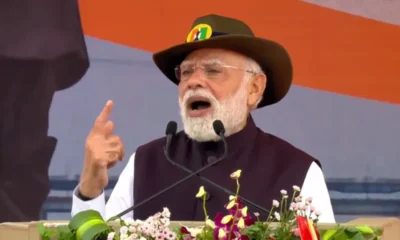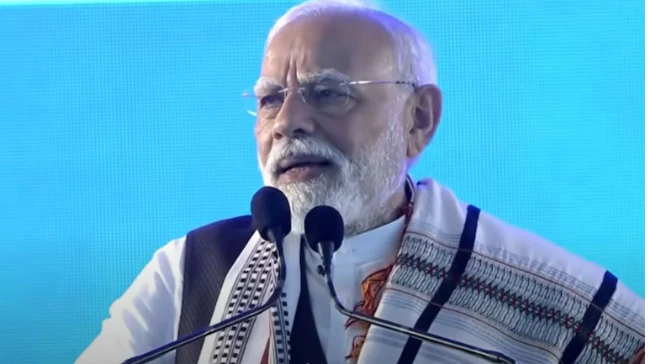[vc_row][vc_column][vc_column_text]
In the middle of an acrimonious election campaign with Prime Minister Narendra Modi and his party BJP talking more about Pakistan, military, Muslims and Hindutva, a new report brings the focus back to hard realities within India.
The State of Working India 2019 report published by Azim Premji University’s Centre for Sustainable Employment in Bengaluru on Tuesday, April 16, says almost 50 lakh men lost their jobs between 2016 and 2018, the “beginning of the decline in jobs” coinciding with the government’s demonetisation exercise in 2016, “although no direct causal relationship can be established based only on these trends”.
The job losses are higher when women are taken into account.
“Whether or not this decline was caused by demonetisation, it is definitely a cause for concern and calls for urgent policy intervention,” the report says.
The report said that unemployment in the country has risen steadily since 2011. The overall unemployment rate was pegged at around 6% in 2018, double what it was between 2000 and 2011.
It assesses that unemployment, in general, has risen steadily post 2011 and the higher educated and the young are vastly over-represented among the unemployed.
In addition to open employment among the educated, the less educated have seen job losses and reduced work opportunities over this time period. The numbers, says the report, clearly demonstrate why unemployment has emerged as the primary economic issue in the election.
The report used data from the Consumer Pyramids Survey of the Centre for Monitoring the Indian Economy or CMIE-CPDX as official data on unemployment from the Periodic Labour Force Survey conducted by the National Sample Survey Organisation have not been released.
The findings of the Periodic Labour Force Survey leaked in January also recorded the unemployment rate in India at a 45-year-high of 6.1% in 2017-’18.
The report said unemployment is prevalent among the higher educated and those in the age group of 20 and 24. This age group accounts for 13.5% of the working population of urban men, but 60% of the unemployed, a great cause for concern as this represents the young workforce. This is true for all segments, urban men and women, rural men and women.
“In general, women are much worse affected than men. They have higher unemployment rates as well as lower labour force participation rates,” the report states.
“In addition to rising open unemployment among the higher educated, the less educated (and likely, informal) workers have also seen job losses and reduced work opportunities since 2016,” the report said.
The CMIE-CPDX is a nationally representative survey that covers about 1,60,000 households and 5,22,000 individuals. It is conducted in “three waves” spanning four months, beginning from January of every year.
“After remaining at around 2-3 per cent for the first decade, the unemployment rate has steadily increased to around 5 per cent in 2015 and then just over 6 per cent in 2018,” the report said. “During the entire time that the overall unemployment rate was around 3 per cent, the unemployment rate among the educated was 10 per cent. It has increased since 2011 (9 per cent) to around 15-16 per cent (in 2016).”
The study also does a comparative analysis of data from three different sets of data and concludes that unemployment trends are by and large consistent in all three.
“The last three years have been one of great turmoil in the Indian labour market as well as in the system of labour statistics…. four big lessons stand out: 1. Unemployment, in general, has risen steadily post-2011, whichever survey we examine. 2. The highest education and the young are vastly over-represented among the unemployed 3. The less educated have seen job losses and reduced work opportunities in this time-period 4. Women are worse off than men with respect to levels of unemployment and reduced labour force participation,” the report states.
India’s working-age population (15+ years) increased from 95 crore 8 lakhs in 2016 to 98 crore 31 lakhs in 2018.[/vc_column_text][/vc_column][/vc_row]


 India News22 hours ago
India News22 hours ago
 India News19 hours ago
India News19 hours ago
 India News23 hours ago
India News23 hours ago
 India News22 hours ago
India News22 hours ago
 India News22 hours ago
India News22 hours ago













